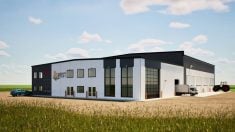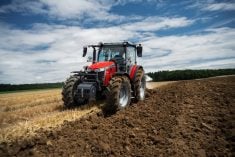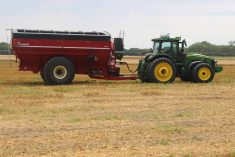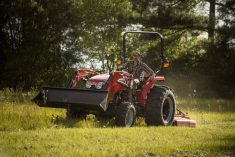When auto-guidance appeared on the scene, grassroots demand from producers and aftermarket system suppliers was what pushed the technology forward.
And as autonomy becomes the newest most disruptive technology in ag equipment, Agco’s senior vice-president and general manager for precision ag and digital, Seth Crawford, sees it becoming mainstream in the same way auto guidance did.
“For those of us old enough to remember, in the early days of guidance you couldn’t actually put guidance systems on some brands of equipment. There were cease-and-desist letters sent from OEMs to guidance companies,” he recalls.
Read Also

Bushel Plus SmartPan system now available from John Deere dealers
Grain growers interested in the Bushel Plus SmartPan system to verify combine grain loss can now check it out at participating John Deere dealers.
“Now that’s all behind us. There are agreements, requirements and things in place that have enabled that. And I think we’re going to see that going forward (with autonomy).”
The success of the retrofit approach that drove auto guidance is part of the reason Agco has chosen to begin introducing autonomous technology to the market in essentially the same way, through retrofit kits.
“If you think about how guidance grew, it didn’t grow because the OEMs said we’re going to deliver guidance,” Agco CEO Eric Hansotia says. “It grew through the retrofit business. Farmers would buy the machine and add guidance on. The guidance was way better for them, and it grew. Then the OEMs said OK, let’s make it easy and do it from the factory. We think autonomy is going to be the same way.”
Agco’s first autonomy retrofit kit, which is due out next year, will not be restricted to just Agco’s own machines. It will eventually be compatible with a range of makes and models. For the initial launch, the brand has decided to include its own Fendt brand tractors and 2014 and newer John Deere 8R tractors.
But as digital lockouts have hampered some shortline manufacturers from matching attachments to some major brand machines, will restricted CANBus access hamper Agco’s efforts to include equipment from other brands in its retrofit kits?
While such reluctance by OEMs to allow digital access has hampered technology adoption in the past, it has been overcome, particularly with auto-guidance and even data access and transfer.
“For sure, there are efforts to lock out,” Crawford acknowledges. “The big factor here is farmers won’t stand for it. That’s how we got the data exchanges going. I think that’s what’s going to drive the interoperability.”
Where to start introducing autonomous systems depends on two factors, Hansotia says. First, the least complex tasks will be the first to go autonomous. Second — and maybe most importantly — adoption will depend to a large extent on farmers’ willingness to let go of the task.
“Where are they going to feel comfortable giving up control? With tillage, if I get it wrong, I can go back there and do it again. I can fix it. With a grain cart, there’s not a lot of risk there either. If I get planting wrong, there’s nothing I can do to catch that up. So we see planting at the back end of the evolution — not because of technology, but because of farmer confidence.”
Another advantage of retrofitting systems is it allows producers to keep the original functionality of tractors, allowing them to operate on their own or in the usual way with an operator in the seat.
“People don’t want to buy a tractor with no cab on it that can only do autonomy,” he adds. “This is going to be something the farmer is going to want to step their way into and say ‘I’d like it to be able to do autonomy for some of my tasks. But for other tasks it wasn’t designed to do autonomously, I want to be able to use my tractor.’”
And as autonomous field operations become market-ready, producers will still have to plan to get autonomous machines to the field the old-fashioned way.
“Also in the industry, no one is talking about autonomous vehicles on the road,” Hansotia says. “So no matter what you do, you have to use the road to get [to fields]. So for the foreseeable future driving on the road will not be autonomous. We’re just not going to tackle the road problem for the first several years. Legislation will tackle it with automotive and we’ll see where it goes.”
















